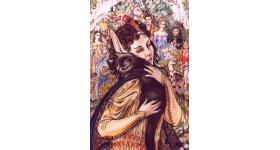- Home
- Community
- Business
-
Tourism
- Towns
- Accommodation
- Attractions
- Activities
- Gallery
- Maps
- Outings
- Pet-friendly accommodation
- S.A. Distance Chart
- Tide Chart
- Tourism Offices
- About Us
- Products
- User Menu
 On 23 April 1811, the Earl of Caledon, British Governor of the Cape, proclaimed the new magisterial district of George. The new town was named after the reigning monarch of England, King George III. The first magistrate, Adrian van Kervel, supervised the buiding of the Drostdy (residency) in 1812. During 1826, the building burnt down and was rebuilt as a private home in 1831 by William Hollett.
On 23 April 1811, the Earl of Caledon, British Governor of the Cape, proclaimed the new magisterial district of George. The new town was named after the reigning monarch of England, King George III. The first magistrate, Adrian van Kervel, supervised the buiding of the Drostdy (residency) in 1812. During 1826, the building burnt down and was rebuilt as a private home in 1831 by William Hollett.
It became the legendary Victoria Hotel in the late 19th century under Alex Fotheringham and continued as such until the property was sold to the George Municipality in 1972. It now houses the George Museum.
George’s first museum, established in 1967, moved from a room in a shop on the corner of Courtenay and Mitchell Streets to the Old Town House (now a restaurant) in Market Street in 1968 and then to its present home in 1976. The George Museum reopened after restoration and renovation in 1992.
An outdoor complex consisting of plantings of fynbos and forest trees, as well as exhibition halls and original yellowwood buildings is the focal point of the museum’s main theme - the indigenous woods and associated industries of the Southern Cape. A display of woodworking tools and domestic, agricultural and industrial objects was opened in December 1994. Museum staff are busy with research into the wood industry and the layout and design of the project. Come and have a look at the small "Indigenous Forest" and pose for a photograph.
An unusual and large collection of mechanical musical instruments, ranging from Swiss musical boxes of 1796 to Edison phonographs of the late 19th century and His Master’s Voice gramaphones of the 1950’s is displayed there. The fantasy paintings of Ruby Reeves who lived in George from the early fifties until her death in 1986, have proved a popular and much loved exhibit. Take time to examine them thoroughly and they will start to tell their own tales and you will see some of her fairies appearing again and again in different paintings.
Photographs © George Museum Society